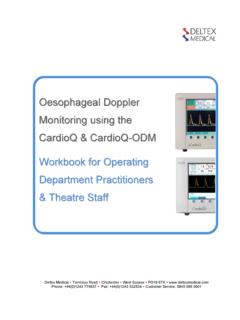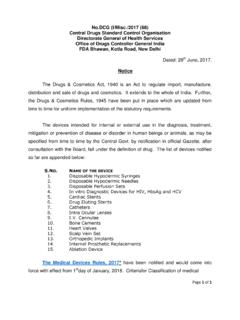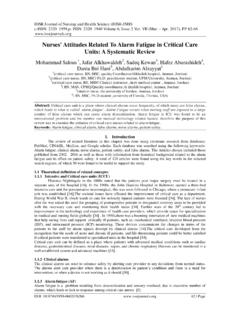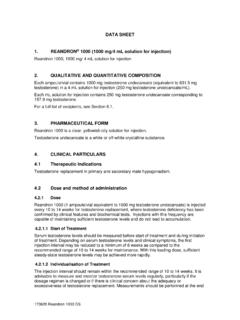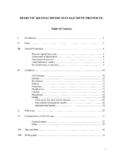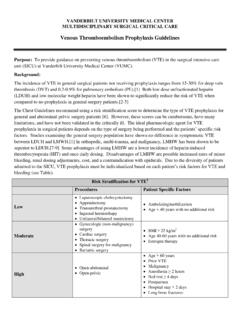Transcription of ICP Treatment Protocol - Global Neurotrauma …
1 Guidelines for the Management of Severe Traumatic Brain Injury Patients: ICP Monitor Group 1. Required patient monitoring measures a. Place ICP monitor i. If the initial placement of the ICP monitor is delayed due to contraindications (eg coagulopathy), then the contraindication must be corrected as rapidly as possible and catheter implantation be performed as soon as the contraindication is removed. ii. In the case of an ICP monitor failure due to catheter breakage, unintentional removal of catheter, or any other damage or compromise of catheter every attempt should be made to replace the catheter with a new properly functioning one.
2 Iii. Every attempt should be made to insert a new ICP monitor following a cranial operative procedure. 2. Additional patient monitoring measures: We strongly suggest using these interventions whenever available and/or possible. a. Place continuous SaO2 and EtCO2 monitors b. Insert indwelling urinary catheter to monitor urine output c. Insert arterial catheter for arterial pressure monitoring d. Insert central venous catheter for infusion of solution and central venous pressure monitoring e. Monitor clinical neurological status each hour i.
3 Pupil size and reactivity ii. GCS f. Obtain brain CT i. To evaluate evolution 48 hours after the admission CT ii. To evaluate evolution 5-7 days after the admission CT iii. As needed based on patient clinical condition 3. General management measures a. Place patient on mechanical ventilation, goal SaO2 > 90% and PaO2 > 60 mmHg b. Use adequate sedation and analgesia i. Acceptable medications include benzodiazepines, opioids, propofol and low dose barbiturates 1. Low dose barbiturate dosing: a. Thiopental (Pentothal) 1-2 mg/kg/hr IV continuous infusion (approx.)
4 Gm/day) c. Maintain head of bed at 30 d. Maintain head and neck aligned and in neutral position e. Actively monitor body temperature and treat hyperthermia i. Hyperthermia defined as central temperature > 38 C ii. Non-pharmaceutical cooling measures 1. Cooling blanket, ice packs iii. Pharmaceutical cooling measures 1. Dipirona (Metamizole sodium) f. Early enteral nutritional support i. Initiate within 48 hours of injury ii. Give 25 Kcal/kg patient weight per day g. Pharmacologic prophylaxis for early post traumatic seizures i.
5 Phenytoin (IV or PO) 1. Loading and maintenance doses as per individual hospital guidelines 2. Continue for 7-28 days h. Gastric bleeding prophylaxis i. Ranitidine or Omeprazole (IV or PO) 1. Administer as per individual hospital guidelines i. Prevent decubitus lesions and treat as indicated j. Deep venous thrombosis prophylaxis k. Frequent tracheal suctioning with sterile technique to prevent pulmonary infections l. Maintain Hb 7 mg/dL, use blood transfusions as needed 4. CT scans a. First CT: upon hospital admission b.
6 Second CT: 48 hours after the first CT c. Third CT: 5-7 days after the first CT d. Additional CT scans as needed based on patient clinical condition 5. Treatment Goals for adequate cerebral perfusion and oxygenation a. ICP 20 mmHg b. Cerebral Perfusion Pressure (CPP) 50-70 mmHg c. Arterial blood oxygen saturation (SaO2) > 90% or PaO2 > 60 mm Hg 6. Initial Therapeutic Interventions a. Normal saline solution ( NaCl) to obtain a CVP of 10-12 cmH2O b. Vasopressors when necessary to obtain a systolic blood pressure (SBP) > 90 mmHg or mean arterial pressure (MAP) > 70 mmHg prior to ICP monitoring (use CPP after monitoring begins).
7 C. Maintain PaCO2 35-40 mmHg if CT is normal i. In Cochabamba, correct for altitude and maintain PaCO2 32-36 mmHg. d. If a space-occupying lesion exists, surgical evacuation is indicated if possible 7. Specific therapeutic interventions-ICP Monitor with Elevated ICP Treatment algorithm. Use the following Treatment interventions sequentially when ICP is elevated or not responding to basic Treatment . Note that clinically significant ICP elevation (not resolving within 5 minutes) requires Treatment , which should be reflected by an increase in the Therapeutic Intensity Level (TIL) for that hour.
8 Failure of ICP response after 20 minutes should prompt further Treatment . a. Maintain CPP between 50-70 mmHg i. Every effort should be made to insert an arterial line for continuous MAP monitoring ii. If arterial line cannot be placed then calculate MAP from non-invasive blood pressure monitoring every hour to calculate CPP b. Ventricular drainage should be considered if available. If an intraparenchymal catheter is already inserted, consider placing the ventricular drain separately. Drainage of intraventricular fluid should be intermittent, with removal of the smallest volume of fluid necessary to control intracranial pressure and used for the shortest period of time possible.
9 It is suggested that drainage be for two minutes and the ventricular catheter then be clamped and the PIC rechecked. When both an intraparenchymal monitor and a ventricular catheter are present, the intraparenchymal device should be used to measure the pressure. Note that the ventricular catheter should be clamped when measuring the pressure using either monitor to ensure accuracy. c. Neuromuscular blockade should be used, suspend if ICP not responding d. Mild hyperventilation to maintain PaCO2 30-35 mmHg (PaCO2 28-32 mmHg in Cochabamba) e.
10 Hyperosmolar/hypertonic therapy i. Mannitol should be used first except in the following situations (HHH): a. Arterial Hypotension b. Hypovolemia c. Hyponatremia 2. Hyperosmolar (Mannitol) therapy guidelines and dosing a. Plasma osmolarity or tonicity should be monitored at least every 12-24 hours i. Plasma osmolarity or tonicity should be calculated using the following formulae: 1. Osmolarity = 2 * (Na) + (BUN/ ) + (Glucose/18) a. Tonicity = 2 * (Na + K) + (Glucose/18) ii. Hyperosmolar therapy should be suspended for plasma osmolarity > 320 or tonicity > 340 b.
